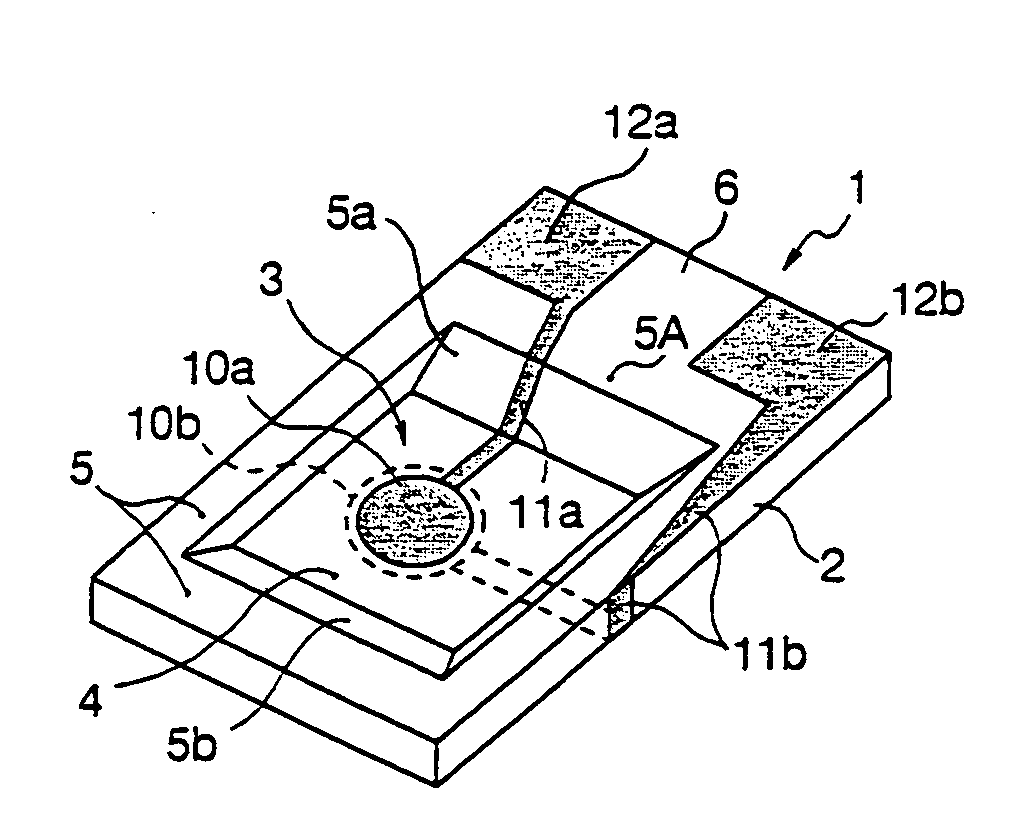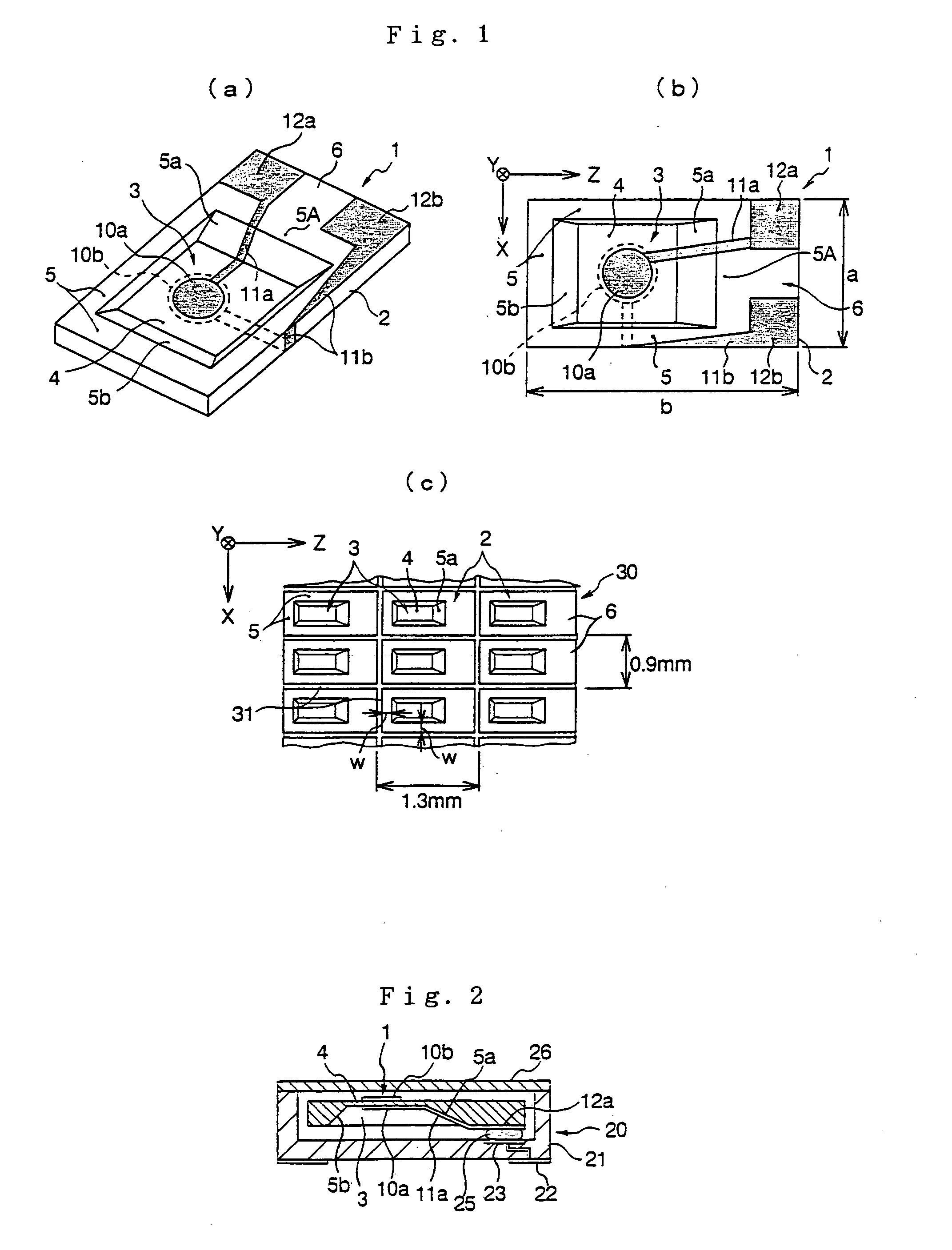Piezoelectric substrate, piezoelectric resonating element and surface-mount piezoelectric oscillator
a piezoelectric resonating element and piezoelectric technology, applied in piezoelectric/electrostrictive/magnetostrictive devices, piezoelectric/electrostrictive/magnetostriction machines, piezoelectric/electrostrictive device details, etc., can solve the problem of insufficient etching that does not completely interconnect the small rectangular holes, and the product is sharply reduced. , to achieve the effect of high-reliability pi
- Summary
- Abstract
- Description
- Claims
- Application Information
AI Technical Summary
Benefits of technology
Problems solved by technology
Method used
Image
Examples
Embodiment Construction
[0116] The present invention will hereinafter be described in detail with reference to its embodiments shown in the drawings.
Embodiment Corresponding to First Prior Art Example
[0117] FIGS. 1(a) and (b) are perspective view and plan views showing a crystal resonating element 1 made of an AT-cut crystal as an example of the piezoelectric resonating element according to an embodiment of the present invention.
[0118] The crystal resonating element 1 is provided with a crystal substrate 2 made of an AT-cut crystal as an anisotropic piezoelectric material, excitation electrodes formed on both major surfaces of the crystal substrate 2, respectively, lead electrodes 11a and 11b extending from the excitation electrodes 10a and 10b, respectively, and connecting pads 12a and 12b forming respective lead electrode end portions.
[0119] The crystal substrate 2 has a construction in which an ultrathin resonating portion 4 is formed by the bottom of a concavity 3 formed by etching in one of major ...
PUM
 Login to View More
Login to View More Abstract
Description
Claims
Application Information
 Login to View More
Login to View More - R&D
- Intellectual Property
- Life Sciences
- Materials
- Tech Scout
- Unparalleled Data Quality
- Higher Quality Content
- 60% Fewer Hallucinations
Browse by: Latest US Patents, China's latest patents, Technical Efficacy Thesaurus, Application Domain, Technology Topic, Popular Technical Reports.
© 2025 PatSnap. All rights reserved.Legal|Privacy policy|Modern Slavery Act Transparency Statement|Sitemap|About US| Contact US: help@patsnap.com



